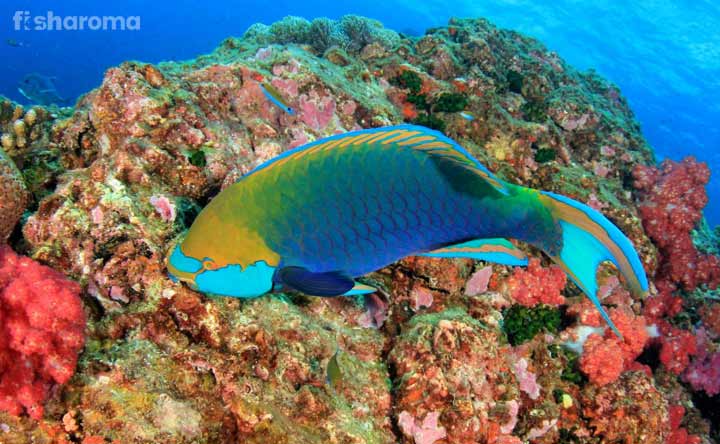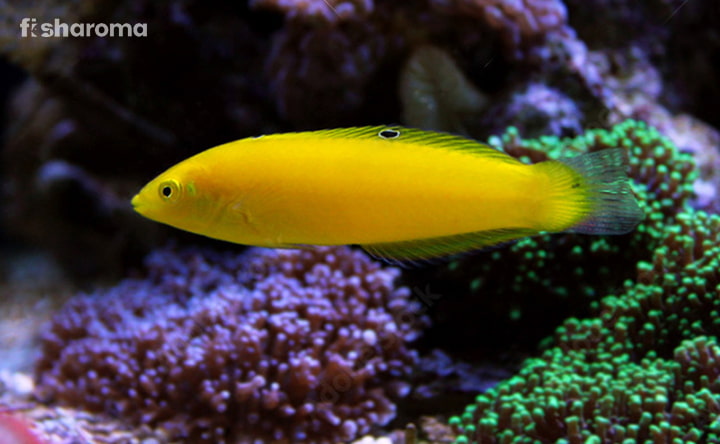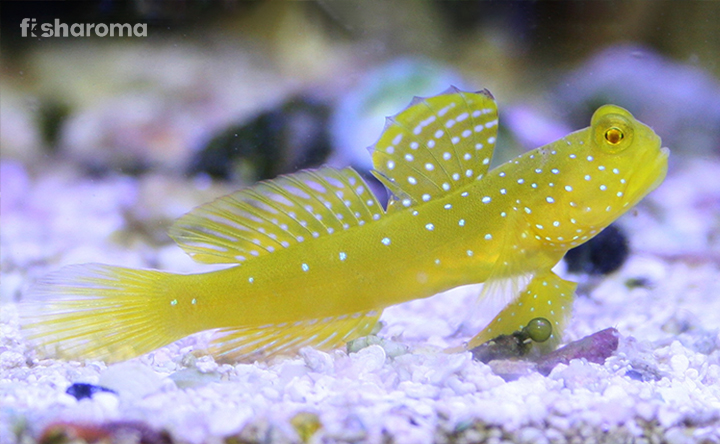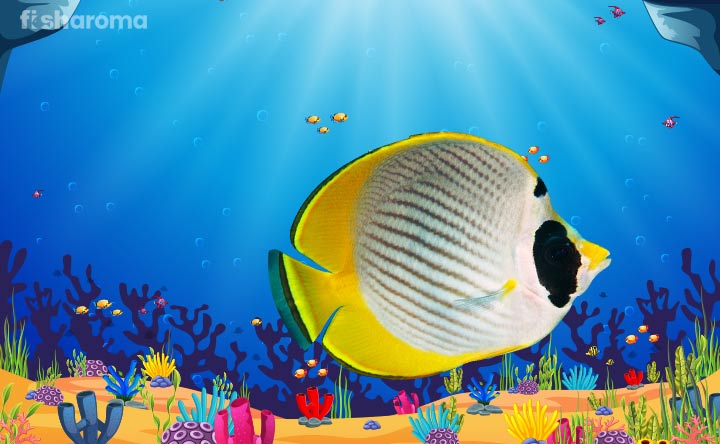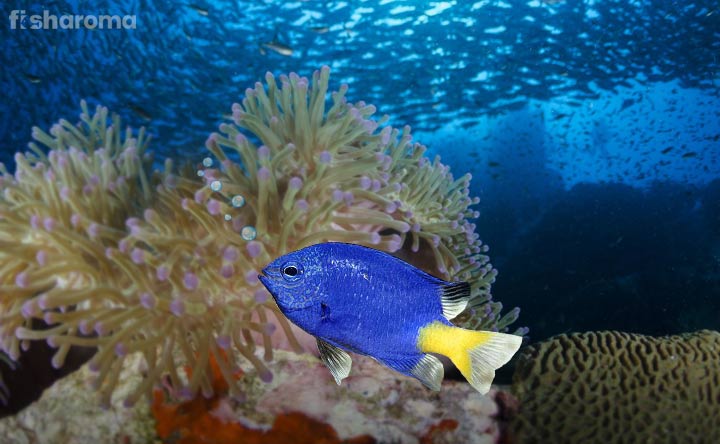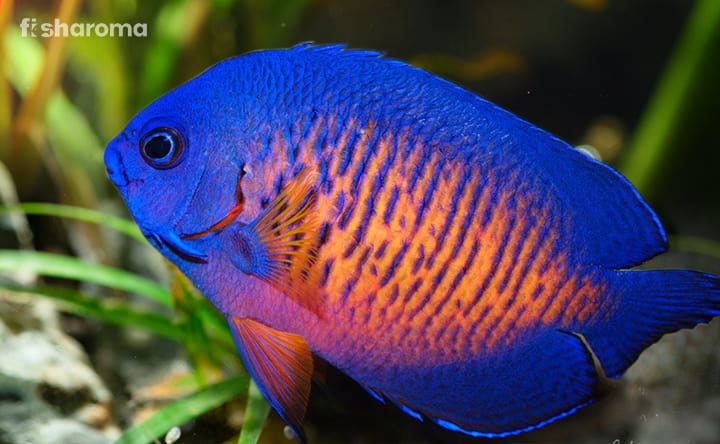Yellow Tang: A Care Guide To This Saltwater Sweetheart
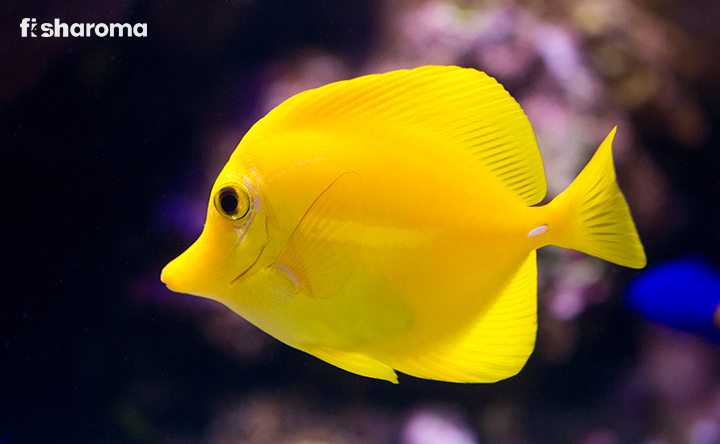
Yellow Tang is a beautiful saltwater species, with a vibrant appearance. This species is known for withstanding a wide range of situations that are otherwise difficult for some fish species. This is why they are a popular saltwater fish choice for all types of aquarists, as beginners and pro hobbyists all can take care of the fishes without any hassle.
There are, obviously, some conditions that one needs to provide for the exotic fish. This article intends to highlight those things, in an elaborative way. Let us now show you how easy taking care of the jovial fish is, if you know some basic things.
Key Specifications of Yellow Tang
| Other Names | Yellow Surgeonfish, Yellow Hawaiian Tang, and Yellow Sailfin |
| Origin | Pacific Regions |
| Lifespan | 5-10 years (in captivity) |
| Colours | Yellow |
| Temperament | Peaceful |
| Size | 7-8 inches |
| Diet | Mostly herbivorous but can be fed an omnivorous diet in captivity |
| Reproduction | Oviparous |
| Maintenance Requirements | Easy-medium |
| Tank Size | 100-150 gallons |
Overview
Yellow Tangs are small to medium-sized marine fishes, who belong to the group of Zebrasoma. This genus consists of different types of surgeonfishes and Yellow Tang is just one of them. Scientifically this species is introduced as Zebrasoma flavescens. This reef-safe species is usually gentle, without having any issues with sharing their tanks with other fishes if the aquarists know how to keep them together. Their longevity is much more in their natural habitat but in captivity that is more or less shortened. Yellow Tangs are overall a good choice if you are ready to commit yourself to a saltwater specific aquarium at home.
Origin and Habitat of Yellow Tang
They happen to occupy Hawaii as their native lands along with Pacific Regions like Wake Island, and the Marshall Islands. They are also prolific in The Great Barrier Reef, Indonesia, and Japan. Additionally, Yellow Tangs have often been seen in the Mediterranean Sea and Florida coasts but they might not be native to these places. In these zones, some captive-bred Yellow Tangs are introduced and now it is their feral population that is seen in the wild.
These fishes swim around the coral-enriched spaces where the water depth could range up to 150 feet. They are seen amongst the sub-tropical reef areas in lagoons.
Appearance of Yellow Tang
The fish has an oval or disc-shaped compressed body. It has a mouth that is a snout and it is the same as the body colour. Their tail and dorsal fins, all contribute to their total seven finned body. Their entire body has mucus that makes their body safe from other predators in the wild.
Size
While a standard Yellow Tang is around 8 inches, there are some specimens that can grow to be 7-7.9 inches on average. Most of the time the female fish is bigger than male Yellow Tangs.
Colour
The fish is completely yellow, covering their mouth, tails, and all fins. The brightness of the yellow is at its peak during the daytime. The vibrancy of the yellow shade starts to fade and transform into greyish or dark yellow throughout the night. The only exception is that their dorsal fin has two white spines on both sides of it. Some of their white stripes also appear during the night time only, and they are called nocturnal stripes.
While the Yellow Tangs are out and out yellow, Blue Tang, another surgeonfish, look exactly the same when they are juvenile. Blue Tangs are completely yellow at first, and as they grow, gradually they start having blue tints on their body.
Behaviour of Yellow Tang
Yellow Tangs are usually gentle fishes that are content in their own zone. Male and female fishes form groups and they shoal together, both in the wild and in captivity (if you keep a group).
They use their dorsal fin a lot while making their way through rocks.
They can be alone as well, or even swim in pairs. It all depends on their mood and friendship within their own groups. Yellow Tangs actively swim in the middle zone of the water, during the day, and at night, they opt for resting or sleeping, behind some coral-encrusted hiding places.
Their defence mechanism is also worthy of mentioning, as their mucus-clad body does the maximum part. They also make their fin expanded to either ward off any potential predators or to showcase their stress when they are scared. They also use their sharp spines to threaten their enemies.
In the wild, the male fishes often change their colours and get a glittery or rather dazzling body shade prior to their copulation. This is actually a way to entice a prospective female mate.
Lifespan of Yellow Tang
These fishes are long living types but their lifespan depends a lot on their living surrounding and caring conditions. While in the wild, these fishes can live for around 30-40 years, in captivity, they can only live for 5-10 years.
This is due to some unavoidable diseases that can affect the hardy fish and these diseases can only get induced in the home tank set up and not in the wild. However, in the health problem section, we will discuss it in detail.
Diet of Yellow Tang
The Yellow Tang has a voracious appetite for zooplanktons and seaweed. They are certified algae eaters who can keep any tank free from such things. Their herbivorous nature can be changed into omnivorous as they are often trained to receive Brine Shrimps, Mysis Shrimps, Krills, and even pellets. To maintain their body colour it is important to restrict their meaty diet extensively.
They get their required nutrition only from plant-based diets, so you can give them blanched or vegetables. Lettuce, Nori, Broccoli, Zucchini, are some of the options you can try.
In case you are giving the frozen or live foods (as treats), you may observe that they are not interested to consume any food right after. Usually, their standard feeding regime should include feeding time a couple of times per day.
This is because they have the power to store the animal fat in their body for a long time. So, they can easily skip eating for some time, and there is nothing wrong with them. This is an important thing to remember because new aquarists might be worried if their pet fish stops eating all of a sudden.
Tank Requirements for Yellow Tang
Yellow Tangs have pretty good size as far as their length is concerned, so they would need a big tank. This is also because they are often kept in a community fish tank. To accommodate all the fishes properly, and avoid aggression amongst them due to lack of space, a spacious tank is better. The decoration and the set-up of the saltwater tank should also be exactly like what these fishes naturally get in their wild habitat. From lights to substrates, the tank should be exactly like their natural surrounding.
You have to ensure that the tank water has a sufficient amount of oxygen for each and every fish, inhabiting the tank. Aerated water is crucial for these fishes who use a lot of energy throughout the day.
Tank Size
The required size for a Yellow Tang friendly tank is at least 100 gallons. It can be bigger, depending on the other fish types and the number of Yellow Tangs inside the same tanks. These fishes are much active, especially when they swim, and throughout the day they need wide spaces for that.
Tank Lid
Yellow Tangs can jump, and many aquarists have experienced this with their pet ones. Having a strong and fitted lid for the tank is important.
Substrate
Any fine and smooth substrates like gravel or sand is ideal for Yellow Tangs.
Filter
A standard filter is good for keeping the water clean from any of the waste that is produced directly or indirectly by the fish. The water should have a good flow so that the fishes find it comfortable for their swimming purpose.
Ornaments
You can decorate the shallow tropical tank with some corals, and other algae producing rocks. Some colourful elements that the fishes could use as their hiding spots would also be great.
Lighting
Set up smooth to moderate lights for your marine tank, accommodating Yellow Tang. Don’t increase the brightness, as harsh lighting is detrimental for the fishes.
Cleaning Method (Water Replacement Procedure)
Keeping the tank clean is important because the poor quality of water will make the fish suffer. Besides cleaning the tank wall, lid, and other things, you should also change the water. The water replacement should happen every week, that too partially.
Foam fractionator is another important thing that will help you keep the reef and corals of the water clean. There might be some food leftovers and other things, that you can’t manually clean all by yourself, use this device for that reason and maintain the tank health.
Water Type for Yellow Tang
Just like any fish tank has some basic water conditions, Yellow Tang thrive in certain conditions and the basic one starts with the water. Here are required parameters in terms of ideal Yellow Tang water requirements.
Temperature
The water temperature should range from 21-28 Degrees Celsius for that tank where Yellow Tangs live.
pH Level
The pH level of the tank should be within 8.1-8.4.
Salinity Level
Since this is a marine reef tank, the water salinity should be 1.020-1.026.
Compatibility of Yellow Tang
They have a good adjustment power when sharing their tank is concerned. The unique thing is that their aggression, however rare, is often generated towards some of their own family members. They will never fight with other fishes who are not from their own genus or family.
If any new fish is introduced to their tank, then Yellow Tangs can be a bully for some time, so, you have to keep them together since their juvenile state. This will help them understand that the tank belongs to both of them and it is not their territory alone.
They can be kept alone, or they can be kept in their small groups.
Suitable Tank Mates
You can keep Chromis, Wrasses, Angelfish, Puffers, Clownfish, Eel, and Hawkfish along with Yellow Tang.
Unsuitable Tank Mates
Aggressive carnivorous fishes which are much bigger than Yellow Tangs can attack them. There are territorial fishes as well, and if they are more powerful than Tangs, then they shouldn’t be housed together. You should avoid Sharks, Piranhas, Groupers, and Lionfish because together they might not get along at all.
Breeding of Yellow Tang
While in the wild, their breeding is normal, however, in captivity, they have not been bred easily enough. In their natural habitat, the male tries to attract the female fish with their changing body colour or through some activities. Once they both get together they start mating and the female fish lays eggs that are later fertilized by the male fishes. According to some, spawning is most likely to happen when the full moon appears.
Since captive breeding is rare we can say one thing, that wild fishes are larger than the captive-bred, (however less they are in number).
Diseases of Yellow Tang
Yellow Tangs are actually strong species, but they do fall sick when the tank condition is not suitable for them. There are some parasites that often make the fishes affected and you can see some signs and symptoms in fishes. It is a wise decision to keep the veterinarian’s number handy so that whenever you see some odd movements of the fishes, you can contact them.
A sick fish can stop being active, or it can become overactive, restless. Observe them closely first and figure out if their changed behaviour has any patterns or not. They are commonly affected by marine ich, where their fin and body becomes a hub of parasites or bacteria. To treat such problems, you need to clean the entire tank.
If they don’t eat as per their requirements or rather don’t get enough nutrition then they can be a victim of Head and Lateral Line Erosion (HLLE). The good thing is they can be treated easily.
Summary
The Yellow Tang, just like its marine cousins, is popular amidst marine aquarists. Why? Because they are strong, easy to care for, don’t create any fuss, and pretty adjusting to so many situations. Is there anything we are missing out on? Oh yes! The majestic hue that covers their bodies and a pair of beautiful eyes which are dark and contrasted against that fresh yellow colouration. They don’t get any brownie points for their breeding in home set up though, but that is okay. A single specimen will entertain you for a long time if you can give what it really needs.
Other Similar Care Guides
- Dragon Wrasse: The fish is known for its vibrant dual looks, one is observed in its juvenile state and another one is seen when the fish is full-grown. This is one of the most famous ones in the entire Wrasse group of fishes.
- Green Chromis: This green shade of fish works in favour of the species and makes them a popular one for a home tank. This is an omnivorous fish, with a peaceful temperament.
- Mandarinfish: The colourful species holds a lot of shades within itself that you will be running out of words to describe them. This is actually a gentle species and aquarists find it as a good pet choice.



